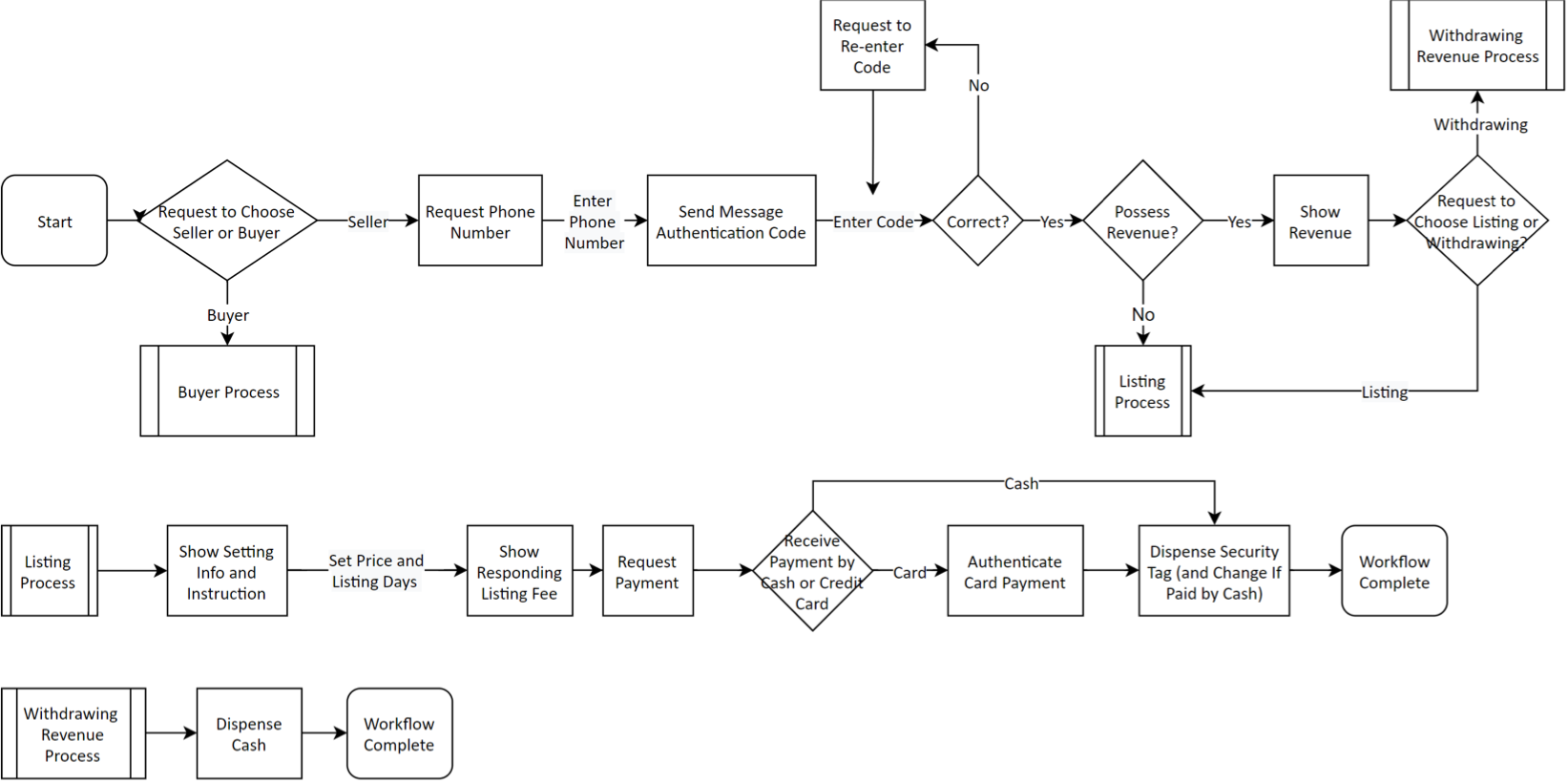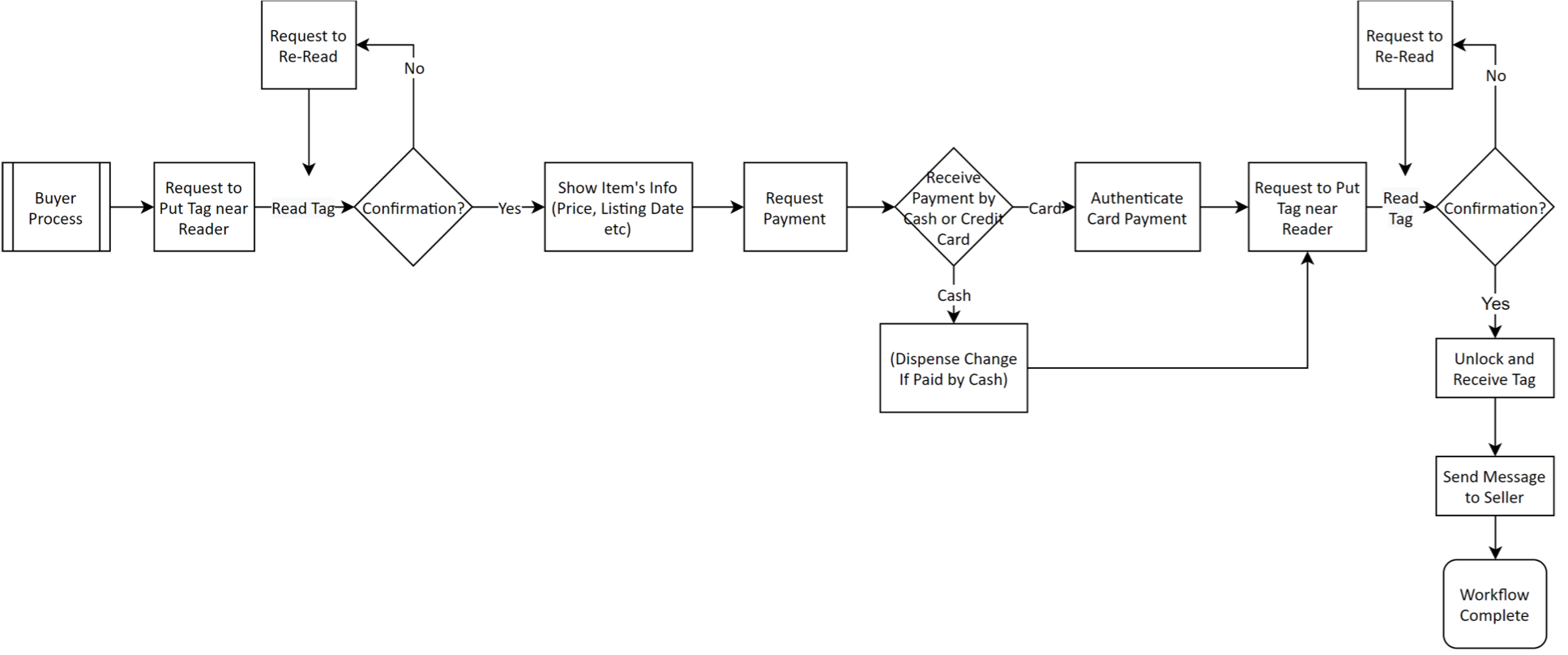Clothes Recycling
introduction
The lack of a convenient, economical clothing trade-in solution contributes to waste and pollution as unused clothing sits in wardrobes. The fashion industry generates enormous waste through the production process; thus, trading secondhand clothing can bring environmental and financial benefits.
For an online Human-Centered Design course, my team conducted our research by the design process to assist people in selling and buying used clothes.
time
Sept - Oct 2019
role
UX Researcher
UX Designer
PROCESS
Timeline
Click an icon for quick access to the corresponding part of the process.
research
Current Situation
The current situation is not convenient and economical for us to recycle our clothes. As a result, some people are loath to get rid of their clothes, which then sit unused in wardrobes for a long time.
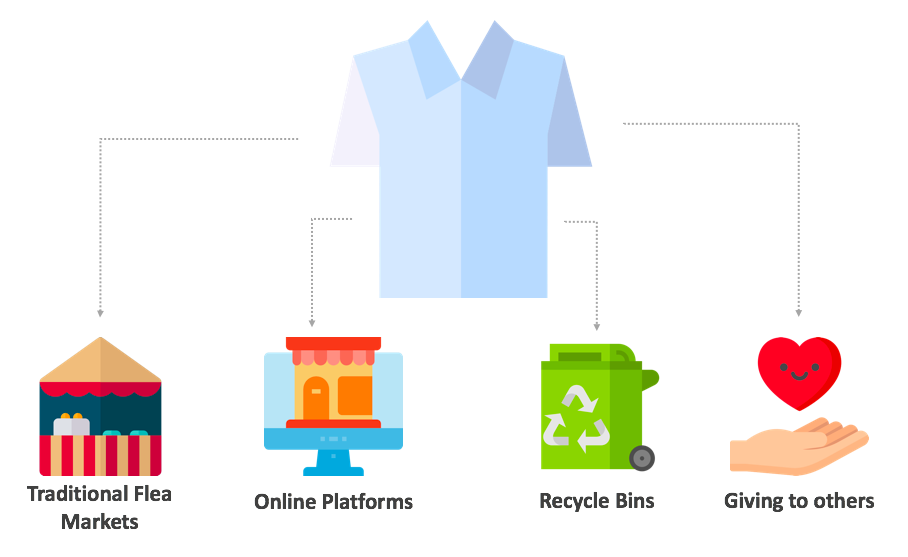
Common Ways about Disposing of Clothes
We started our project with the people we wanted to help. Modern people usually trade second-hand clothes through traditional flea markets and online shopping websites, so we interviewed some sellers in a flea market of Taipei city, and I tried selling old clothes through online shopping websites.
Interview
The interviewees are designers, caterers, and office workers. Their age range is 25-30.
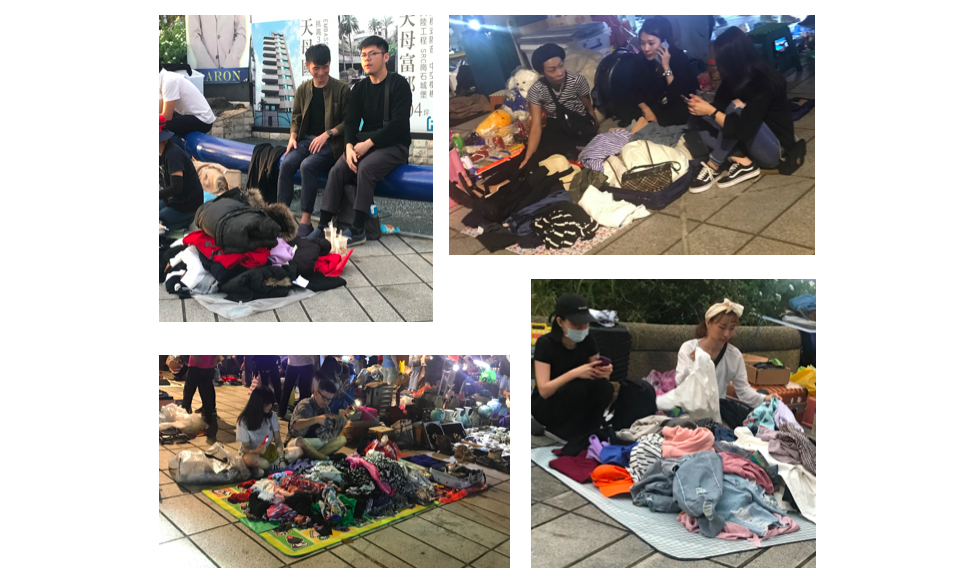
Interviews at Tianmu Market
Their main opinions are as below:
1. Selling clothing on the Internet usually requires patience since lots of people ask many questions but don’t buy anything in the end.
2. Selling at flea markets is much useful but unprofitable since customers tend to bargain.
Online Selling
I listed our used clothes on Shopee and Carousell, the popular e-commerce platforms in Taiwan. Our items are men’s and women’s clothes including T-shirts, dresses, jeans, jackets, etc. Futhermore, I kept optimizing trading strategy including amending descriptions and lowering prices.
However, we sold only ONE out of 27 items during our one-month test.
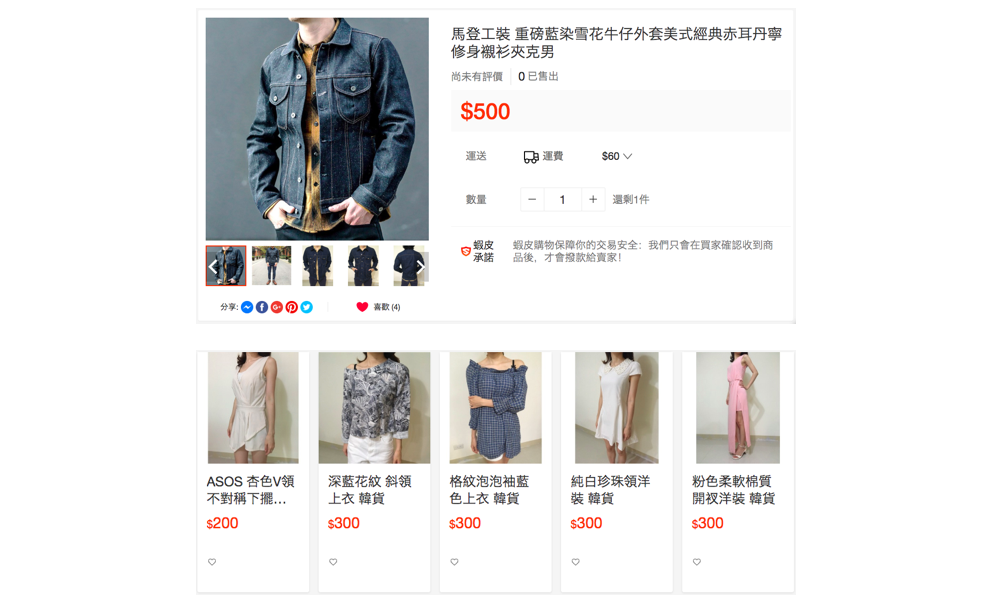
Our items on Shopee
Identifying Problems
After synthesizing the responses from interviewees and my sales results, we found two main problems about trading used clothes:
1. People were reluctant to buy used clothes from the Internet because they didn’t know the true condition of the clothes.
2. Buying and selling second-hand clothes at traditional flea markets is time-consuming, and vendors sometimes did not earn enough profit to cover the rental costs of their stalls.
To provide a more convenient way for people to recycle their clothes economically, our solution had to address those pain points.
design
Creating Solution
Our goal is to provide a more convenient way for people to recycle their clothes economically. At this part, we conducted many brainstorms and ultimately found our solution: self-service kiosks.
User Flow
During the solution-building process, I was in charge of designing the flow: at first, sellers could enter their phone numbers, set the price of their clothing on the kiosks and fix security tags on clothes, then pay listing fees and leave their clothes on racks beside the kiosks. The security tags prevented people from stealing the clothes. Buyers could choose clothes from the racks and pay. After paying, they could remove the tags and take the clothes away. Later, sellers would receive messages which remind them to withdraw their revenue from the kiosks.

Trading through Self-service Kiosks
The rationale behind this flow is that it shares a similar experience with other regular self-service kiosks such as ticketing kiosks, and therefore users could use our system with minimum barriers. Moreover, the reason why sellers should enter their phone numbers is that it could not only inform sellers of withdrawing revenue but also allow users to check their selling history on our system, which helped them to optimize their trading strategies.
The detailed process are as below:
Distribution
We planned for these kiosks to be set in local self-service laundromats.
There are two reasons why we choose laundromats:
1. More Access
Urban people often rely on laundromats to clean clothes, so this as an easier way for people to access second-hand clothes and see the actual condition of used clothes for themselves.
2. Decreasing Costs
People who buy used clothes may use other services in laundromats. Our system thus created a win-win situation for both customers and laundromat owners, which would make owners more willing to lower the price of renting space for the kiosks.
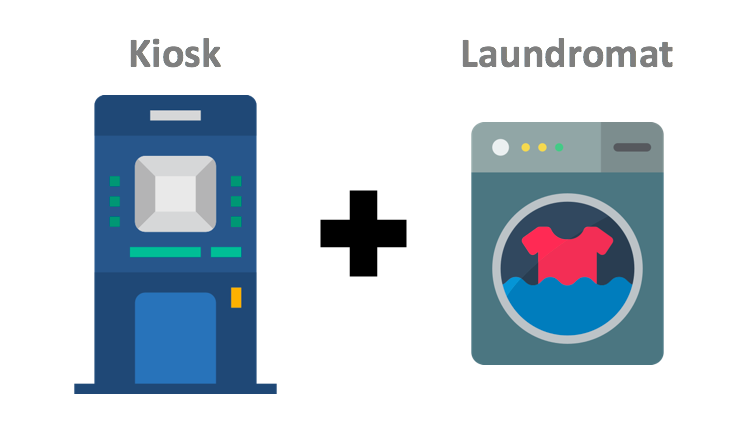
Self-service Kiosk and Laundromat
Test
Prototype
At this part, we made a prototype and asked a few people to test it. With users’ feedback, we could optimize our solution and offer a better system to everyone. There are two main opinions:
Distributing the kiosks to more types of locations based on regional culture.
Add functionality to allow users to check items information on a website.

Prototype

User Interface of the Kiosk
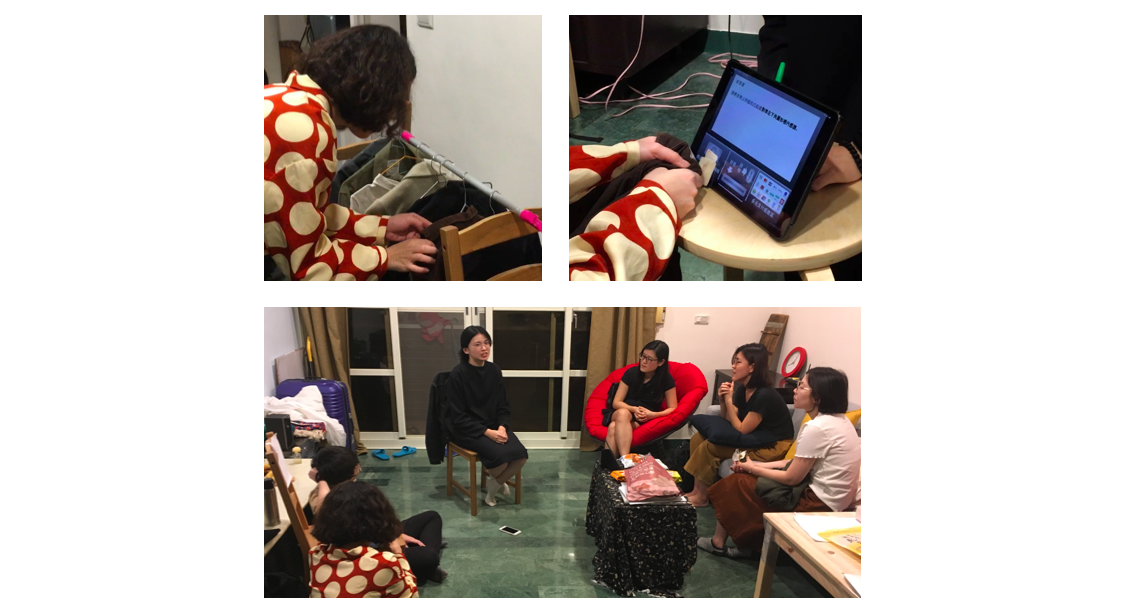
Test and Feedback
review
How to improve
An Example of Coordinating with Regional Culture
The kiosks in Taiwan could be placed in convenience stores, and there are two main reasons why setting in convenience stores would be helpful:
1. More Access
Taiwanese consumers often visit convenience stores; thus, this distribution strategy would facilitate access to our system.
2. Decreasing Costs
The stores often possess point of sale (POS) systems, which could integrate the kiosks’ functions to both save space and decrease operating costs.
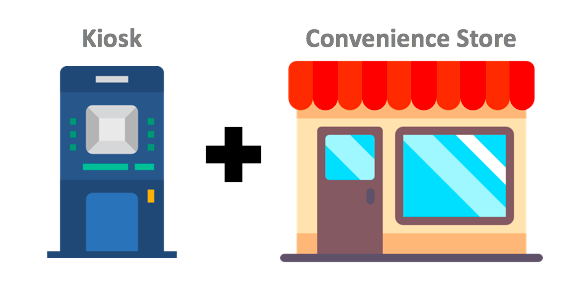
Self-service Kiosks and Convenience Stores
Conclusion
We provided a solution that relieved buyers' key concerns about used clothing while creating an affordable selling channel. Moreover, our system could be distributed to more outlets, enabling people to trade used clothes more conveniently and economically.
With the help of design process, I am able to identify problems, conduct brainstorms, make and test prototypes in a more efficient way.

